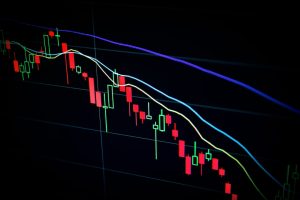Forex trading is a complex and risky activity that involves buying and selling currencies in order to profit from fluctuations in their exchange rates. One of the key tools used by forex traders to maximize their profits is leverage. Leverage allows traders to control a larger amount of money than they would otherwise be able to, using only a small amount of their own capital. In this article, we will explore why leverage is needed in forex trading, how it works, and what are the risks involved.
What is leverage in forex trading?
Leverage is a financial tool that allows traders to borrow money from their brokers in order to increase their trading position. Leverage is expressed as a ratio that represents the amount of money a trader can control with a given amount of their own capital. For example, if a trader has a leverage ratio of 100:1, they can control $100,000 worth of currency for every $1,000 of their own capital.
How does leverage work in forex trading?
Leverage works by allowing traders to open larger positions than they would be able to with their own capital. When a trader opens a position, they are required to put up a certain amount of margin, which is a percentage of the total position value. The rest of the position value is covered by the broker, who loans the trader the funds necessary to open the trade.
For example, if a trader wants to open a $100,000 position with a leverage ratio of 100:1, they would only need to put up $1,000 of their own capital as margin. The broker would loan the trader the remaining $99,000 needed to open the position. This allows the trader to control a much larger position than they would be able to with their own capital alone.
Why is leverage needed in forex trading?
Leverage is a necessary tool in forex trading for several reasons. First and foremost, it allows traders to maximize their profits. By controlling larger positions, traders can potentially earn more money from the same price movements than they would be able to with smaller positions. This is particularly important in forex trading, where even small price movements can result in significant profits or losses.
Secondly, leverage allows traders to enter the market with a smaller amount of capital. Forex trading requires a significant amount of capital to be able to trade effectively, and not everyone has the resources to do so. By using leverage, traders can enter the market with a smaller amount of capital, which makes forex trading more accessible to a wider range of people.
Lastly, leverage is needed in forex trading because it allows traders to hedge their positions. Hedging is a strategy that involves opening two opposing positions in order to reduce risk. For example, if a trader is long on the EUR/USD currency pair, they can hedge their position by opening a short position on the same pair using leverage. This would help to offset any losses in the long position, reducing the overall risk of the trade.
What are the risks involved in using leverage?
While leverage can be a powerful tool in forex trading, it also comes with significant risks. The main risk of using leverage is that it amplifies both profits and losses. This means that even a small price movement in the wrong direction can result in significant losses. Additionally, if a trade goes against the trader, they may be required to add more margin to their position in order to keep it open. If they are unable to do so, the broker may close their position, resulting in a loss.
Another risk of using leverage is that it can lead to overtrading. When traders have access to large amounts of capital, they may be tempted to open more trades than they would otherwise. This can lead to a lack of discipline and a failure to properly manage risk, which can result in significant losses.
Conclusion
In conclusion, leverage is a necessary tool in forex trading that allows traders to control larger positions than they would be able to with their own capital. It is important to remember, however, that leverage comes with significant risks and should be used with caution. Traders should always have a solid understanding of the risks involved and should use leverage only after careful consideration of their trading strategy and risk management plan.






